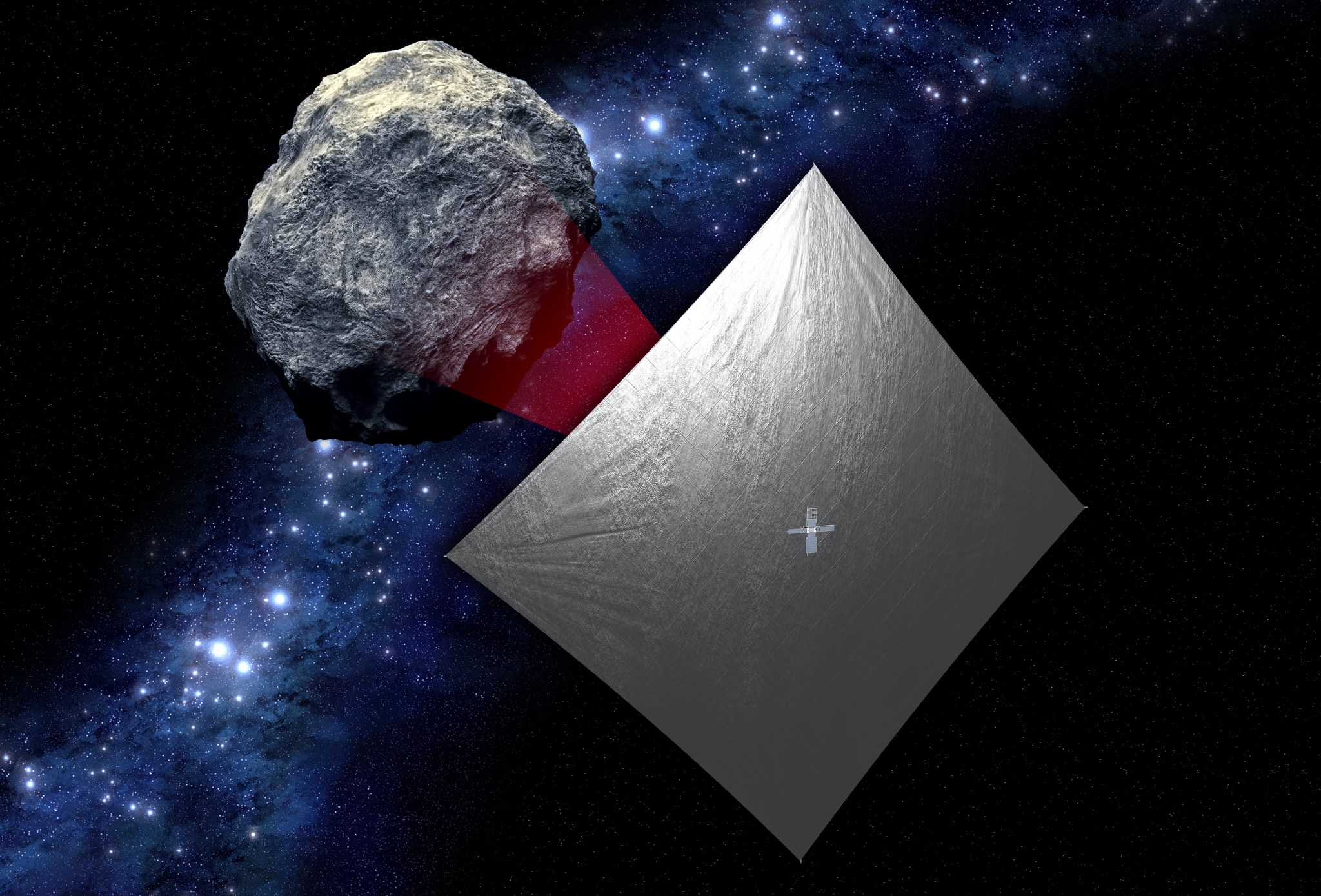Progress continues on the journey to Mars as NASA plans to send astronauts deeper into space than ever before, including to an asteroid and ultimately to the surface of Mars. Before humans embark on the journey, the agency will survey an asteroid to learn about the risks and challenges asteroids may pose to future human explorers.
One way NASA will do this is by performing a reconnaissance flyby of an asteroid with Near-Earth Asteroid Scout, or NEA Scout. NEA Scout — a CubeSat, or small satellite — will launch as a secondary payload on the inaugural flight of NASA’s Space Launch System (SLS), the world’s most powerful rocket, scheduled to launch in 2018. Information gained from NEA Scout’s flyby will enhance the agency’s understanding of asteroids and their environments and will help reduce risk for future exploration of asteroids and small planetary bodies.
NEA Scout’s second mission objective will be to develop and verify a low-cost reconnaissance platform capable of carrying a wide range of research spacecraft to many destinations. To do this, NEA Scout will utilize a solar sail, harnessing solar pressure to propel the spacecraft.
NEA Scout’s solar sail will be larger and travel farther than any NASA has ever deployed in space. “As a propulsion system that doesn’t require any propellant, solar sails have a lot of potential,” said Les Johnson, NEA Scout’s solar sail principal investigator. “In the future, solar sails can take spacecraft to the outermost regions of the solar system faster than ever before.”
NEA Scout’s flight solar sail will be 86 square meters, approximately the length of a full-size school bus. Engineers at NASA’s Marshall Space Flight Center in Huntsville, Alabama, recently conducted a series of tests with a sail roughly half that size — 36 square meters to verify the folding and deployment of the sail in deep space.
“We were able to zero in some specifics of design, motor size, hardware attrition and even the time required to fold and deploy the sail,” said Tiffany Russell Lockett, NEA Scout Sail systems engineer. Next spring, the team will build and test a full-size engineering development unit.
Only one-third of NEA Scout’s total size can be dedicated to the solar sail. Each of the 13 CubeSats hitching a ride on the SLS will be the size of a large shoebox and weigh less than 30 pounds. For the school bus-size sail to fit within the small space requirements, it will have to be meticulously folded and then unpacked in space. To test the folding and deployment process, engineers built a low-cost test article using parts left over from previous programs.
“We were fortunate to have parts so readily available to test these new techniques,” said NEA Scout Project Manager Leslie McNutt. “It’s a fabulous opportunity for us to learn more before building our engineering development unit.”
The lightweight assembly consists of three 3D printed spools — an oblong spool that contains the sail’s material and two smaller spools, each containing two booms, or the sail’s arms. The booms — which will unfold the sail and hold it in place during flight — are strong, yet flexible.
“The booms are much like a handyman’s metal tape measure. They are very strong when held out straight, and when bent they become flexible enough to be wound around the spools — saving space,” said McNutt.
The sail’s material, a strong plastic with aluminum coating, is as thin as a human hair and has to be meticulously folded and wrapped around the oblong spool. Once in space, the booms — each attached to a different corner of the sail — will extend, unpacking the solar sail.
“We successfully tested a new folding technique that has never been used before with solar sails,” said McNutt. “The sail material is folded like an accordion and unreels like a bow tie as the booms deploy.”
To simulate a microgravity environment similar to that in space, the team used Marshall’s Flat Floor Facility — the world’s flattest floor. “We connected air bearings to the ends of the booms,” said McNutt. “That allowed the booms to float on a thin layer of air above the floor, offsetting the effects of Earth’s gravity.”
McNutt believes solar sails like NEA Scout’s could be a game changer in the future of deep-space missions. “In the past, they have been relatively small,” she said. “Advances like NEA Scout’s sail could enable larger and larger spacecraft. The larger the spacecraft, the larger the solar sail will need to be. You have to work your way up — this is a step in the direction of bigger and better.”
NASA’s Advanced Exploration Systems (AES) manages NEA Scout with the team led at Marshall Space Flight Center with support from the Jet Propulsion Laboratory in Pasadena, California. AES infuses new technologies developed by NASA’s Space Technology Mission Directorate and partners with the Science Mission Directorate to address the unknowns and mitigate risks for crews and systems during future human exploration missions.
For more information about NASA’s Marshall Space Flight Center, visit:
For more information about Secondary Payloads, visit:
www.nasa.gov/launching-science-and-technology
For more information about NEA Scout, visit:


























